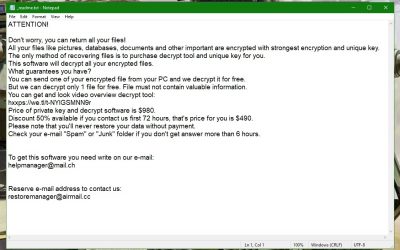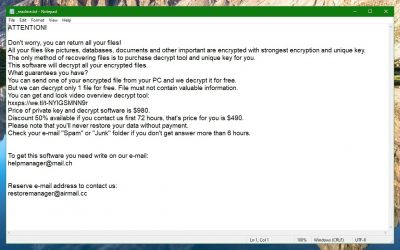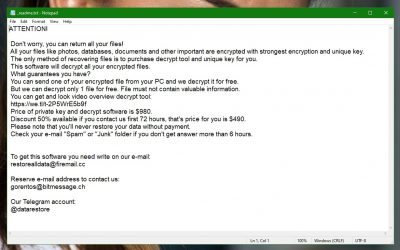Pedro Virus Removal (+.Pedro File Recovery)
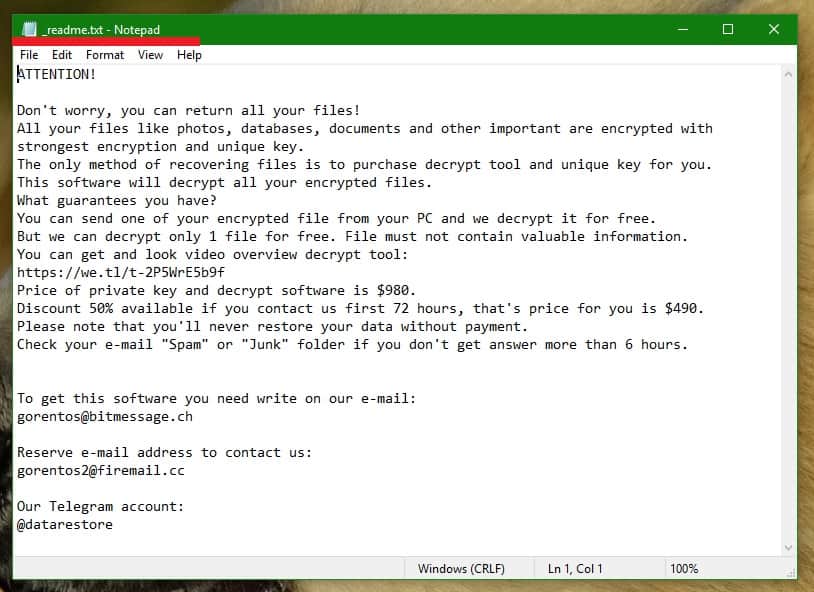
The Ransomware viruses are some of the most malicious types of computer threats that you may face online. These threats are very stealthy and, in the blink of an eye, can encrypt your most valuable files and ask you to pay a ransom to decrypt them. The secret encryption the Ransomware infections are capable of applying is generally very difficult to reverse. The following article is dedicated to one very sophisticated representative of the Ransomware family, named Pedro. This new Ransomware belongs to the cryptovirus subcategory, and represents a danger to a large number of web users. Our “How to remove” professionals have been contacted with a request for assistance by some of our site visitors, who have had the misfortune of becoming victims to the harmful effects of Pedro. For this reason, we have come up with this article, and the attached removal guide down below. Detecting and removing the Ransomware is really important for the prevention of new data encryption, and is also an essential step towards making your computer a safe and secure again. Removing the virus alone, however, may not liberate the encrypted files. You may need separate instructions to potentially recover some of your most valuable information. That’s why, within the removal guide, you will find a separate file-recovery section, which gives you some ideas on what is you can try.
The .Pedro virus attack

There is extremely little chance that you would be able to intercept a Ransomware virus just before it completes its secret file encryption. This is because most representatives of this category can remain under the radar of the security software that you may have. Moreover, the encryption itself is quite sophisticated in most of the cases of infection. And, as a result, cracking the code used to block the access to your files usually proves to be impossible without the application of the corresponding decryption key. The problem is that this decryption key is in the hands of the hackers who stay behind the Ransomware, and they won’t give it to you unless you pay a certain amount of money to their cryptowallet. Immediately after the infection completes with the file encryption, they typically place a ransom-demanding message on the screen with ransom payment instructions and deadlines. So, what are your options?
.Pedro file-decryption options
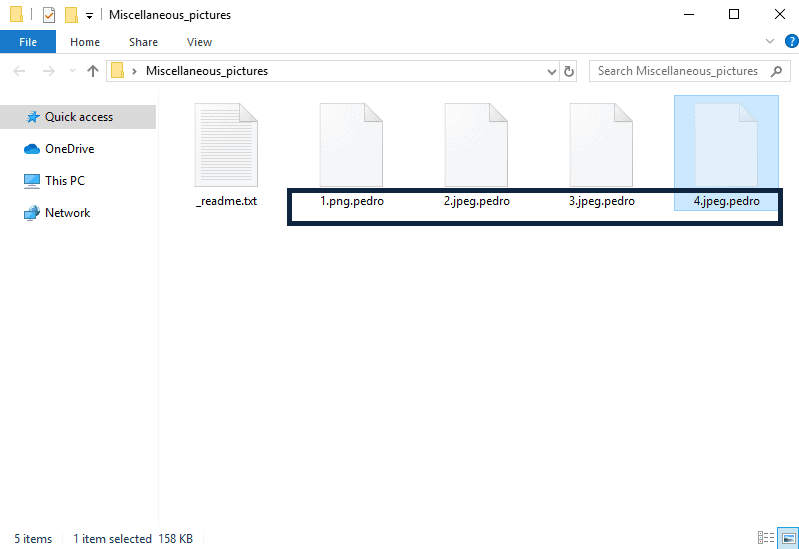
One is to pay the ransom, which would be exactly what the cyber-terrorist want from you. This, however, will be essentially funding their criminal scheme without any guarantee about the future of your files. Besides, in case you proceed down that path, not only will you be risking your money, but also you will completely be placing the fate of your files in the hands of the criminals who’ve blocked the access to them in the first place. And that, as the practice has shown, is oftentimes not a very good idea. Many victims of Ransomware like Pedro, Coharos or Nasoh have never received the decryption solution they had been promised, even after they have had complied with all the ransom requirements, and many more have received an utterly ineffective key. For this reason, our suggestion is to focus on how to remove Pedro instead of sponsoring the hackers – you can do that with the help of the removal guide below, and explore some more file-recovery alternatives that don’t involve paying a ransom.
Pedro SUMMARY:
| Name | Pedro |
| Type | Ransomware |
| Danger Level | High (Pedro Ransomware encrypts all types of files) |
| Symptoms | Pedro Ransomware is hard to detect and aside from increased use of RAM and CPU, there would barely be any other visible red flags. |
| Distribution Method | Most of the time, Trojans get distributed through spam e-mails and social network messages, malicious ads, shady and pirated downloads, questionable torrents and other similar methods. |
Pedro Ransomware Removal
1: Preparations
Note: Before you go any further, we advise you to bookmark this page or have it open on a separate device such as your smartphone or another PC. Some of the steps might require you to exit your browser on this PC.
2: Task Manager
Press Ctrl + Shift + Esc to enter the Task Manager. Go to the Tab labeled Processes (Details for Win 8/10). Carefully look through the list of processes that are currently active on you PC.
If any of them seems shady, consumes too much RAM/CPU or has some strange description or no description at all, right-click on it, select Open File Location and delete everything there.

Also, even if you do not delete the files, be sure to stop the process by right-clicking on it and selecting End Process.
3: IP related to Pedro
Go to c:\windows\system32\drivers\etc\hosts. Open the hosts file with notepad.
Find where it says Localhost and take a look below that.

If you see any IP addresses there (below Localhost) send them to us here, in the comments since they might be coming from the Pedro.
[add_forth_banner]
4: Disable Startup programs
Re-open the Start Menu and type msconfig.
Click on the first search result. In the next window, go to the Startup tab. If you are on Win 10, it will send you to the Startup part of the task manager instead, as in the picture:

If you see any sketchy/shady looking entries in the list with an unknown manufacturer or a manufacturer name that looks suspicious as there could be a link between them and Pedro , disable those programs and select OK.
5: Registry Editor
Press Windows key + R and in the resulting window type regedit.
Now, press Ctrl + F and type the name of the virus.
Delete everything that gets found. If you are not sure about whether to delete something, do not hesitate to ask us in the comments. Keep in mind that if you delete the wrong thing, you might cause all sorts of issues to your PC.
6: Deleting potentially malicious data – Pedro
Type each of the following locations in the Windows search box and hit enter to open the locations:
%AppData%
%LocalAppData%
%ProgramData%
%WinDir%
%Temp%
Delete everything you see in Temp linked to Pedro Ransomware. About the other folders, sort their contents by date and delete only the most recent entries. As always, if you are not sure about something, write to us in the comment section.
7: Pedro Decryption
The previous steps were all aimed at removing the Pedro Ransomware from your PC. However, in order to regain access to your files, you will also need to decrypt them or restore them. For that, we have a separate article with detailed instructions on what you have to do in order to unlock your data. Here is a link to that guide.
